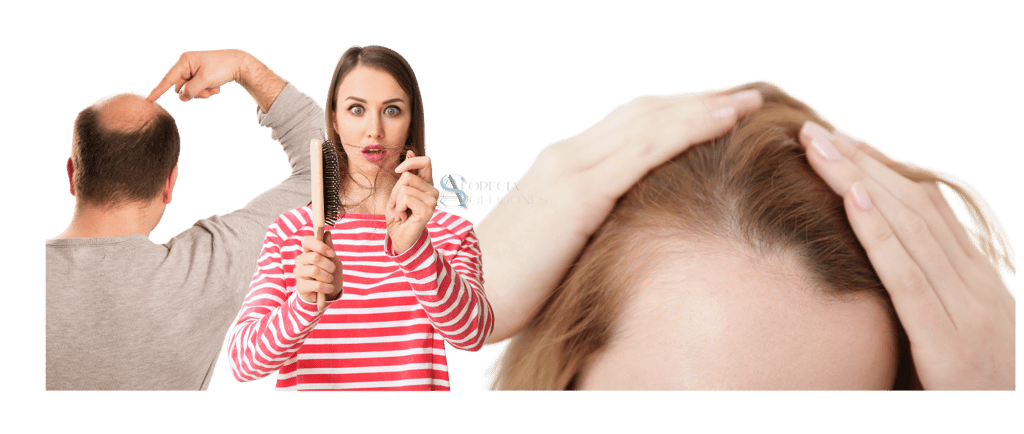Types of Alopecia: Classification and Description for Men and Women
Alopecia is a condition that affects both men and women, causing hair loss. This condition can manifest in various forms and have different causes, so it's important to understand its types and characteristics. In this article, we'll explore the most common types of alopecia and their specificities in both sexes.
ALOPECIA
Alopecia Soluciones


Types of Alopecia
Alopecia is a condition that affects both men and women, causing hair loss. This condition can manifest in various forms and have different causes, so it's important to understand its types and characteristics. In this article, we'll explore the most common types of alopecia and their specificities in both sexes.
Androgenetic Alopecia
Androgenetic alopecia, also known as common baldness, is one of the most prevalent types of hair loss in both men and women. In men, this condition tends to begin in adolescence and progresses gradually, often beginning with a receding hairline at the temples. In women, it can present as diffuse hair loss on the top of the head. The main cause is sensitivity to androgens, hormones that regulate hair growth.
Alopecia Areata
Alopecia areata is an autoimmune disease that can affect people of any age. It is characterized by patchy hair loss, which can vary in size and location. Although it is more common in younger people, it can occur at any age. In this type of alopecia, the immune system attacks hair follicles, causing hair to fall out. In some cases, hair can regrow, while in others, hair loss may be permanent.
Alopecia Totalis and Universalis
Within the alopecia areata family, we find two more severe variants: alopecia totalis and alopecia universalis. Alopecia totalis is characterized by total hair loss on the scalp, while alopecia universalis involves hair loss all over the body, including eyebrows and eyelashes. These types are less common and can be the result of a critical episode affecting a person's emotional or physical health.
Cicatricial Alopecia
Cicatricial alopecia is a type that occurs due to injury to hair follicles, resulting in scar tissue where hair had previously grown. This can occur as a result of inflammatory diseases, infections, or trauma. Hair loss in this case can be permanent, as the follicle cannot regenerate.
Conclusions
Alopecia is a complex issue that varies significantly between men and women. Knowing the different types and degrees of alopecia can help sufferers seek appropriate treatment and understand their condition. It is essential for anyone experiencing hair loss to consult a healthcare professional for an accurate diagnosis and to consider treatment options.
Connection
We connect patients with effective hair clinics.
Servicios
Citas
© 2025. All rights reserved.
